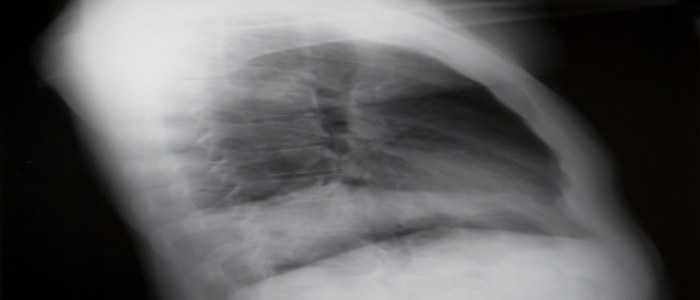
Silicosis: Causes, Symptoms, and Treatment Options
Silicosis is a serious and incurable lung disease caused by repeated inhalation of crystalline silica dust, which is found in many common materials such as concrete, brick, and sand. Silicosis can lead to permanent scarring and hardening of lung tissue, making it difficult to breathe. Understanding the causes, symptoms, diagnosis, and treatment options for silicosis is important for prevention and management of this potentially deadly occupational lung disease.
What Exactly is Silicosis Disease?
Silicosis is a progressive occupational lung disease characterized by inflammation and scarring in the lungs due to inhalation of crystalline silica dust, which is released into the air during activities that involve rock, concrete, brick, and sand. Also known as “grinder’s disease” or “potter’s rot”, silicosis typically develops after years of moderate to low exposure to respirable crystalline silica.
When tiny sharp silica particles are inhaled, they lodge deep in the delicate lung tissue and cannot be expelled. The body responds by trying to encapsulate the foreign particles with collagen fibers, which causes nodules of scar tissue called fibrotic masses to form. This reduces lung capacity and elasticity, making breathing progressively more difficult over time.
There are three main types of silicosis:
- Chronic silicosis – Develops after 10 or more years of repeated low to moderate silica exposure. Symptoms may continue to worsen even after exposure stops. This is the most common type.
- Accelerated silicosis – Results from higher exposures over a shorter 5-10 year period. Progresses faster than chronic silicosis.
- Acute silicosis – Occurs after exposures to extremely high silica concentrations over weeks to 5 years. Symptoms quickly become severe and progression is rapid.
What Causes Silicosis to Develop?
The principal cause of silicosis is occupational exposure to airborne respirable crystalline silica dust particles. Jobs associated with a high risk of silicosis include:
- Sandblasting metal, stone, concrete, and glass
- Jackhammering, drilling, crushing of concrete and rocks
- Mining and tunneling through rock
- Manufacturing glass, pottery, ceramics, artificial stone products
- Masonry and concrete construction work
- Operating frac sand mines and processing plants
- Abrasive blasting using silica sand
- Stonecutting, polishing, and shaping
- Road construction involving rock, stone, and concrete materials
Recognizing Silicosis Symptoms
In the early stages, silicosis may not cause any noticeable symptoms. As silicosis progresses, the most common signs and symptoms include:
- Shortness of breath, initially with physical exertion
- Persistent dry, nonproductive cough
- Wheezing or crackling sounds while breathing
- Extreme fatigue, weakness, and tiredness
- Loss of appetite and weight loss
- Chest pain or tightness
- Respiratory infections and fever
- Respiratory failure in acute cases
How is Silicosis Diagnosed?
Silicosis is diagnosed based on occupational exposure history, respiratory symptoms, and a variety of tests to assess lung function and obtain images. Diagnostic tests include:
- Medical and exposure history – Identifying exposure to silica dust at work through jobs, tasks, years worked.
- Physical examination – Listening to lungs for abnormal sounds signaling scarring.
- Chest x-ray – Detecting scarring and lesions indicative of silicosis.
- CT scan – Providing more precise and detailed lung tissue images.
- Pulmonary function test – Assessing lung capacity and airflow for impairment.
- Arterial blood gas test – Measuring oxygen levels in blood.
- Lung biopsy – Examining lung tissue samples under a microscope.
Can Silicosis be Cured Once Diagnosed?
Unfortunately at this time there is no cure for silicosis. The scar tissue and lesions that form in the lungs cannot be reversed once they develop. However, treatment options are available to help relieve symptoms and slow the progression of the disease.
Treatment focuses on:
- Bronchodilators to relax airways and improve breathing.
- Inhaled steroids to reduce lung inflammation.
- Antibiotics for secondary respiratory infections.
- Cough medicines.
- Oxygen administration for hypoxemia.
- Managing other lung conditions and heart disease.
- Lung transplant in severe end-stage disease.

Good general health practices like smoking cessation, healthy eating, exercise, and rest also help manage silicosis symptoms. But the most critical factor is avoiding any further silica dust exposure, which can accelerate and exacerbate the condition.
How Can Silicosis Be Prevented?
Since there is no cure for silicosis, the best approach is thorough prevention of exposures in workplace settings. Recommended prevention methods include:
- Substitution of silica-containing materials with safer alternatives when feasible.
- Enclosure of silica dust generating processes and use of local exhaust ventilation.
- Providing proper respiratory protection such as N95 masks or respirators.
- Using water spray or vacuum dust suppression techniques.
- Allowing only limited work durations in high exposure areas.
- Implementing standard protocols and training on safe working practices.
- Conducting air monitoring to verify silica dust controls maintain exposures below OSHA Permissible Exposure Limits.
- Performing regular medical examinations for early detection and minimizing additional exposures.
Conclusion:
In summary, silicosis is a lung disease with no known cure caused by chronic inhalation of crystalline silica particles that leads to irreversible scarring in lung tissue. Understanding the occupational risk factors, addressing the early symptoms, and getting proper diagnostic testing is essential. While treatment can help manage symptoms, ongoing avoidance of silica dust is critical. Through vigilant exposure controls, safe work practices, protective equipment use, and medical surveillance, silicosis can be prevented. Both employers and workers must collaborate to implement a successful prevention-focused program.
